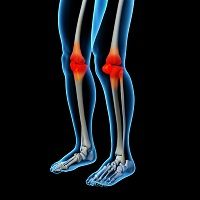Intra-articular Injection of Traumeel and Zeel Reduce Knee Pain in Double-blind Trial
Intra-articular injection of two widely used plant and mineral extract-based formulations provide long-lasting pain relief in patients with moderate to severe pain from knee osteoarthritis, according to the first-ever double-blind trial of the treatments.

Intra-articular injection of two widely used plant and mineral extract-based formulations provide long-lasting pain relief in patients with moderate to severe pain from knee osteoarthritis, according to the first-ever double-blind trial of the treatments. Results were reported here at the 2014 annual meeting of the American College of Rheumatology.
Pain relief from three injections over two weeks of the two formulations, Tr14 (Traumeel®) and Ze14 (Zeel®), was significantly better than placebo beginning at two weeks after the first injection, and lasting out to the study’s end at 99 weeks.
Both Tr14 and Ze14 are mixtures of 14 different extracts, which include yarrow, belladonna, Echinacea, and sulfur. “These compounds have been available and used intra-articularly for a long time,” according to lead study author Carlos Lozada, MD, a rheumatologist in the University of Miami Health System. The impression among clinicians who have administered the treatment “has been that there was something there, but there were no double-blind data to support that,” he said, which was the rationale for the trial. “The study was undertaken to see if there was a true effect.”
The study enrolled 232 patients at 30 sites in the United States. Eligible patients were men and women ages 45 to 80 years, with moderate-to-severe chronic knee osteoarthritis based on both clinical and radiographic criteria, who were taking either an NSAID or acetaminophen for pain.
Patients were randomized 1:1 to either Tr14 plus Ze14 or matching placebo, injected intra-articularly on days 1, 8, and 15, the standard injection schedule in clinical treatment.Care was taken to maintain the blind through masking of the injected solutions, Lozada said.
Patients were evaluated every 2 weeks. Acetaminophen rescue was allowed, but not in the 24 hours before a study visit. No other pain medications were allowed.
On the primary endpoint, the change from baseline on the knee subscale of the WOMAC A (Pain) Scale, treatment with Tr14/Ze14 was significantly better than placebo beginning at day 15 (at the time of the final injection), and remained significantly better at all study visits except for day 29.
On the 100 mm visual analog scale, patients receiving Tr14/Ze14 had pain reduction at 99 weeks of approximately 33 mm, and those receiving placebo of approximately 26 mm. Superiority to placebo was also seen in the secondary endpoint of pain following a 50 meter unassisted walk.
Adverse events were generally mild and unrelated to treatment, Lozada said, and there were no treatment-related serious adverse events.
“In this trial, the combination of the two treatments was shown to be safe and effective for moderate to severe pain associated with knee osteoarthritis,” he said. “We need to continue to build on this study, to better understand which components may be responsible for this effect.”